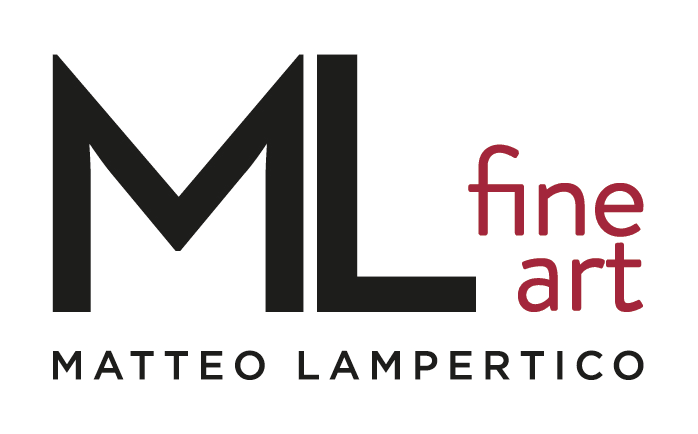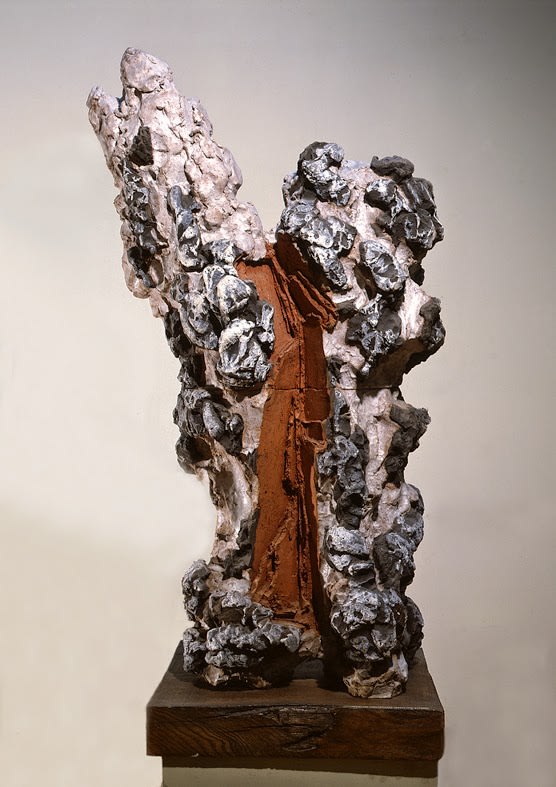-
-
 Lucio Fontana and Leoncillo Leonardi, Milan, 1960
Lucio Fontana and Leoncillo Leonardi, Milan, 1960Looking at Concetto spaziale by Lucio Fontana and San Sebastiano by Leonardo Leoncillo it is immediately visible that the two artworks, even if different for the techniques used, share several features: the granular texture, the tarnished surface, the glittery details and dynamic appearance.
Concetto spaziale, 1957 is part of the Barocchi series that Fontana began in 1954. With these canvases he explored three-dimensionality not only through holes and cuts, but also with the addition of shimmering and coloured fragments of glass and sand. Thanks to this combination Fontana obtained a remarkable effect of movement which evoke the dynamism of the Baroque style.
On the other side, Leoncillo, deeply fascinated by the decorative art of the seventeenth and eighteenth centuries, introduced since his very early pieces lush and curly shapes, as well as a wide range of colours and visual effects typical of Baroque. This vibrant imprint of the surfaces intensified the artworks’ exuberance. All these features are present in his San Sebastiano, 1961. For its dramatic power, this martyr figure was explored by the artist throughout his entire career. Also when his production became informal and lost any figurative recall, Leoncillo saw in the tormented matter of his sculptures the pain and suffering of the saint’s tortured body.
-
The two works in dialogue show the encounter of the two artists' productions, which obtained similar aesthetics results in the late fifties with the influence of Informel. Before the war, Leoncillo and Fontana, while sharing the intent of detaching themselves from the traditional sculpture, took distinctive paths. Fontana, motivated by the influence of Futurism and Constructivism, combined spatial investigation with figurative expressionism in his first production of religious subjects, marine life, flora and fauna. Later, in the sixties, his art became abstract and minimalist. Influenced by Manzoni, Fontana searched for pure, geometric and monochromatic solutions. As self- taught Leoncillo, after been introduced in the intellectual environment of Galleria La Cometa, decided to isolate for three years in a handcraft factory in Umbertide where he perfected his ceramic technique. In the first part of his career, Leoncillo followed expressionist influences and linear decomposition, almost recalling cubism. After 1956, however, he adopted a new informal and abstract language.
-
 Leoncillo working in his studio
Leoncillo working in his studio -
 Fontana in front of a sculpture by Leoncillo
Fontana in front of a sculpture by Leoncillo -
 Leoncillo, Affinità patetiche, 1962, Palazzo Collicola
Leoncillo, Affinità patetiche, 1962, Palazzo Collicola
Lucio Fontana in conversation with Leoncillo Leonardi: Concetto spaziale, 1957 and San Sebastiano, 1961
Past viewing_room











